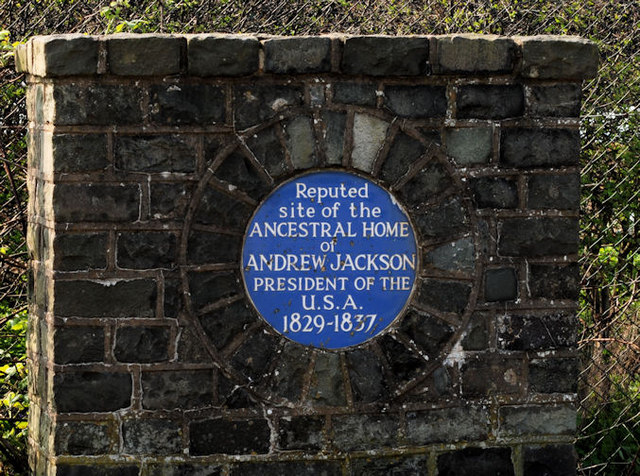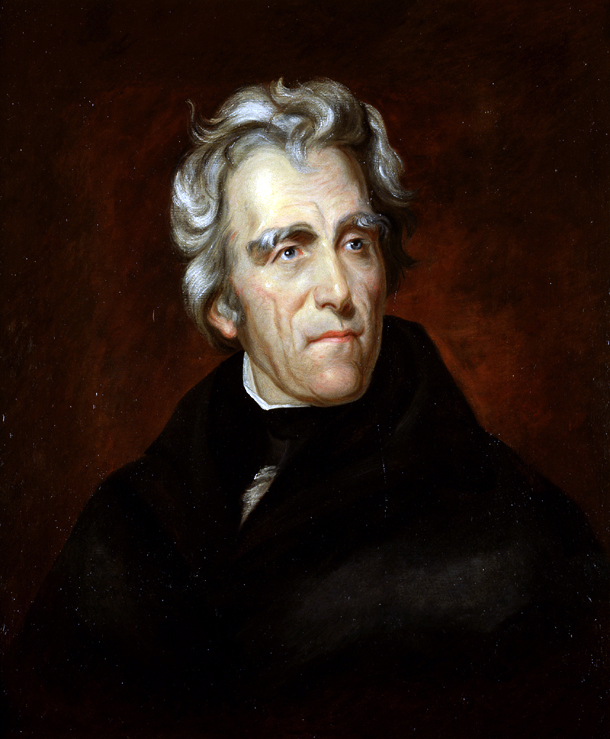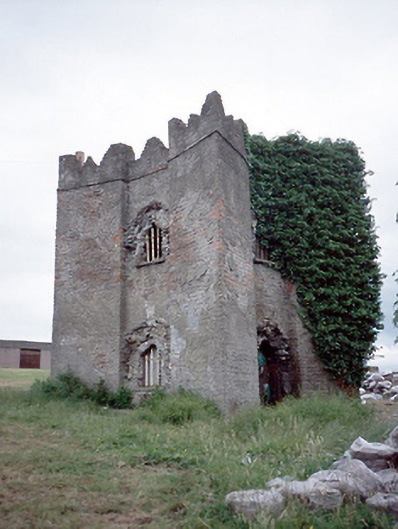Hello all, this is my first foray into alternate history in quite a while, the other timelines being simply projects I wrote for my own personal enjoyment. I've been trying to find a way to come up with a different take on an American Balkanization and civil war without retreading the USA/CSA ground again and so we have this first installment of my new timeline. Fair warning, I'm active duty US Navy and currently deployed, so my research materials consist of intermittent internet access, whatever the ship's library has available and my own recollections and readings over the years. I have a pretty solid idea of where I want the timeline and narrative to go so I will do my best to keep updates coming in a timely and consistent manner but work schedules obviously come first. Without further ado, here we go, comments and criticisms welcomed and encouraged.
POD: The Nullification Crisis intensifies as Andrew Jackson does not repeal the Tariff of 1828, the “Tariff of Abominations” and likewise does not propose the compromise Tariff of 1832. This intransigence is fueled by his personal antipathy towards John C. Calhoun, who has returned to South Carolina and is the leading advocate of nullification and armed resistance to any coercive acts of the US government. After Calhoun’s resignation as Vice President, Jackson further proposes and Congress passes the Force Bill on March 2, 1833. Various attempts on both sides to reach some sort of compromise are forestalled until Jackson, believing that South Carolina’s actions are a clear and present danger to the continued existence of the United States, calls for 30,000 volunteers to restore South Carolina to “obedience of the federal authorities”. This action leads to the other Southern states, up till now mostly indifferent to or at most mildly sympathetic to South Carolina decrying Jackson’s actions as dictatorial and pledging their support to South Carolina should the Federal government resort to armed force. Jackson, utilizing the powers delegated through the passage of the Force Bill, refuses to engage at all with what he contemptuously refers to as “Calhoun’s Cabal”.
During the call up of volunteers the governors of several states utilize the extant state militias, with some agreeing to serve to crush what is beginning to be characterized as “the slaver’s Rebellion” while others refuse, pointing out that Federal volunteers must be paid for and equipped by the Federal government. One state which does utilize a limited call-up of militia is Pennsylvania where a charismatic and frighteningly devout John Brown initially refuses to enlist before receiving what he calls an epiphany from God and enrolls. Elected as captain of his local company, he joins the slowly growing Federal force around Washington DC in the summer of 1833.
The actual raising of volunteers leads to questions throughout the Northern and Midwestern states as the authority exercised by Jackson is questioned in several quarters. In Jackson’s home state of Tennessee the state splits into opposing armed camps, with pro-Jacksonites clashing with pro-nullification groups and leading to ever increasing bloodshed as the crisis deepens.
Increasingly the conflict shifts away from the question of the constitutionality of nullification and towards one of sectionalism and slavery. Abolitionists seize on the resistance of South Carolina and the other Southern states as an excuse to inflame anti-slavery opinion and begin to call for the Federal government to act unilaterally to stamp slavery out. This in turn leads Southerners to shift their strategy from a defense of nullification on abstract Constitutional grounds to a need for the South to unite to preserve their way of life and prevent slave insurrections and the implied massacre of Southern citizenry.
By fall 1833 three camps exist, the first, consisting of New England, New York, New Jersey and Pennsylvania, supports Jackson’s actions and feels that military action is the only thing that will compel South Carolina and by extension the rest of the South into compliance. The second group consists of South Carolina, Georgia, Alabama, Mississippi and Louisiana as well as the territories of Arkansas and Florida who increasingly see the Federal government’s call for volunteers as a direct threat to their freedoms and rights that must be met with determination and if necessary force. The third group are those states who for various reasons stand neutral, from the slave-holding states who are not as enmeshed in the nullification debate such as Virginia, Maryland, Delaware, Kentucky, North Carolina, Tennessee and Missouri and the states of the Old Northwest who still believe the call for armed force is premature.
The tensions on both sides are heightened even further when Calhoun calls on the slaveholding states to send delegates to a Convention aimed at “clarifying the rights, responsibilities and limitations of the Federal powers as they exist vis a vis the individual States.” Georgia, Alabama, Mississippi and Louisiana agree, Maryland, Delaware and Missouri decline and Virginia, Tennessee, North Carolina and Kentucky send various observers without empowering them to enter into any negotiations. Calhoun extends the invitation to the Arkansas and Florida territorial governments as well and both these send delegates.
Jackson, upon hearing this news, believes he has his chance to gather up all the “traitors” in one fell swoop. The Convention convenes in Charleston, South Carolina on November 3, 1833. Two days later, on November 5, Jackson authorizes the US Army concentrated around Washington to march South to effect the arrest of Calhoun and the delegates and transport them back to Washington for trial. He issues his Proclamation of Loyalty the same day, stating that the sole purpose of the Army’s movement is to seize Calhoun and his “cabal of treasonous swine.” He further states that the Army will not interfere with the government or institutions of any of the states it must pass through to enforce its’ edict but that any resistance by any of the states will be considered treason and a justification for armed response. The Army marches south the next day, some 15,000 strong led by Major General William Henry Harrison, recalled to duty due to his family ties to Virginia as well as his attachment to the states of the Old Northwest, both centers of moderation.
Accompanying the army south is the newly promoted Colonel of Pennsylvania militia, Colonel John Brown.
POD: The Nullification Crisis intensifies as Andrew Jackson does not repeal the Tariff of 1828, the “Tariff of Abominations” and likewise does not propose the compromise Tariff of 1832. This intransigence is fueled by his personal antipathy towards John C. Calhoun, who has returned to South Carolina and is the leading advocate of nullification and armed resistance to any coercive acts of the US government. After Calhoun’s resignation as Vice President, Jackson further proposes and Congress passes the Force Bill on March 2, 1833. Various attempts on both sides to reach some sort of compromise are forestalled until Jackson, believing that South Carolina’s actions are a clear and present danger to the continued existence of the United States, calls for 30,000 volunteers to restore South Carolina to “obedience of the federal authorities”. This action leads to the other Southern states, up till now mostly indifferent to or at most mildly sympathetic to South Carolina decrying Jackson’s actions as dictatorial and pledging their support to South Carolina should the Federal government resort to armed force. Jackson, utilizing the powers delegated through the passage of the Force Bill, refuses to engage at all with what he contemptuously refers to as “Calhoun’s Cabal”.
During the call up of volunteers the governors of several states utilize the extant state militias, with some agreeing to serve to crush what is beginning to be characterized as “the slaver’s Rebellion” while others refuse, pointing out that Federal volunteers must be paid for and equipped by the Federal government. One state which does utilize a limited call-up of militia is Pennsylvania where a charismatic and frighteningly devout John Brown initially refuses to enlist before receiving what he calls an epiphany from God and enrolls. Elected as captain of his local company, he joins the slowly growing Federal force around Washington DC in the summer of 1833.
The actual raising of volunteers leads to questions throughout the Northern and Midwestern states as the authority exercised by Jackson is questioned in several quarters. In Jackson’s home state of Tennessee the state splits into opposing armed camps, with pro-Jacksonites clashing with pro-nullification groups and leading to ever increasing bloodshed as the crisis deepens.
Increasingly the conflict shifts away from the question of the constitutionality of nullification and towards one of sectionalism and slavery. Abolitionists seize on the resistance of South Carolina and the other Southern states as an excuse to inflame anti-slavery opinion and begin to call for the Federal government to act unilaterally to stamp slavery out. This in turn leads Southerners to shift their strategy from a defense of nullification on abstract Constitutional grounds to a need for the South to unite to preserve their way of life and prevent slave insurrections and the implied massacre of Southern citizenry.
By fall 1833 three camps exist, the first, consisting of New England, New York, New Jersey and Pennsylvania, supports Jackson’s actions and feels that military action is the only thing that will compel South Carolina and by extension the rest of the South into compliance. The second group consists of South Carolina, Georgia, Alabama, Mississippi and Louisiana as well as the territories of Arkansas and Florida who increasingly see the Federal government’s call for volunteers as a direct threat to their freedoms and rights that must be met with determination and if necessary force. The third group are those states who for various reasons stand neutral, from the slave-holding states who are not as enmeshed in the nullification debate such as Virginia, Maryland, Delaware, Kentucky, North Carolina, Tennessee and Missouri and the states of the Old Northwest who still believe the call for armed force is premature.
The tensions on both sides are heightened even further when Calhoun calls on the slaveholding states to send delegates to a Convention aimed at “clarifying the rights, responsibilities and limitations of the Federal powers as they exist vis a vis the individual States.” Georgia, Alabama, Mississippi and Louisiana agree, Maryland, Delaware and Missouri decline and Virginia, Tennessee, North Carolina and Kentucky send various observers without empowering them to enter into any negotiations. Calhoun extends the invitation to the Arkansas and Florida territorial governments as well and both these send delegates.
Jackson, upon hearing this news, believes he has his chance to gather up all the “traitors” in one fell swoop. The Convention convenes in Charleston, South Carolina on November 3, 1833. Two days later, on November 5, Jackson authorizes the US Army concentrated around Washington to march South to effect the arrest of Calhoun and the delegates and transport them back to Washington for trial. He issues his Proclamation of Loyalty the same day, stating that the sole purpose of the Army’s movement is to seize Calhoun and his “cabal of treasonous swine.” He further states that the Army will not interfere with the government or institutions of any of the states it must pass through to enforce its’ edict but that any resistance by any of the states will be considered treason and a justification for armed response. The Army marches south the next day, some 15,000 strong led by Major General William Henry Harrison, recalled to duty due to his family ties to Virginia as well as his attachment to the states of the Old Northwest, both centers of moderation.
Accompanying the army south is the newly promoted Colonel of Pennsylvania militia, Colonel John Brown.



